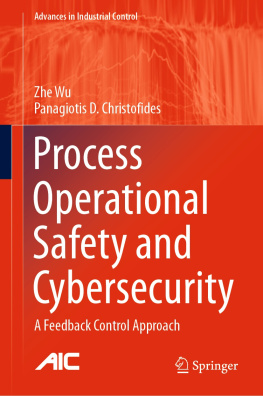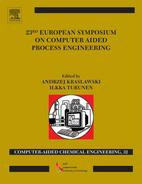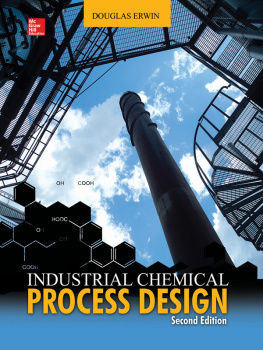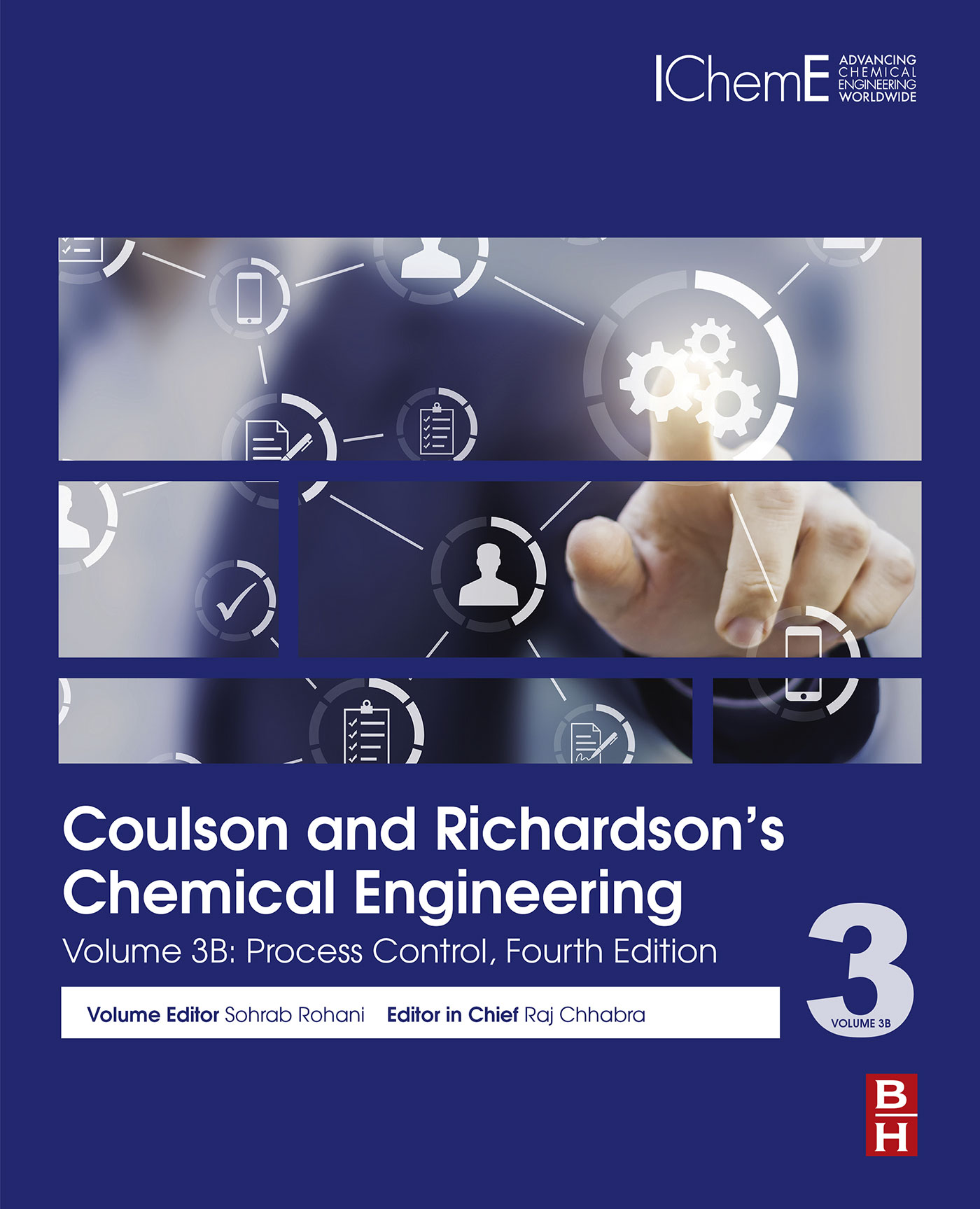Coulson and Richardsons Chemical Engineering
Volume 3B: Process Control
Fourth Edition
Sohrab Rohani

Copyright
Butterworth-Heinemann is an imprint of Elsevier
The Boulevard, Langford Lane, Kidlington, Oxford OX5 1GB, United Kingdom
50 Hampshire Street, 5th Floor, Cambridge, MA 02139, United States
2017 Elsevier Ltd. All rights reserved.
No part of this publication may be reproduced or transmitted in any form or by any means, electronic or mechanical, including photocopying, recording, or any information storage and retrieval system, without permission in writing from the publisher. Details on how to seek permission, further information about the Publishers permissions policies and our arrangements with organizations such as the Copyright Clearance Center and the Copyright Licensing Agency, can be found at our website: www.elsevier.com/permissions.
This book and the individual contributions contained in it are protected under copyright by the Publisher (other than as may be noted herein).
Notices
Knowledge and best practice in this field are constantly changing. As new research and experience broaden our understanding, changes in research methods, professional practices, or medical treatment may become necessary.
Practitioners and researchers must always rely on their own experience and knowledge in evaluating and using any information, methods, compounds, or experiments described herein. In using such information or methods they should be mindful of their own safety and the safety of others, including parties for whom they have a professional responsibility.
To the fullest extent of the law, neither the Publisher nor the authors, contributors, or editors, assume any liability for any injury and/or damage to persons or property as a matter of products liability, negligence or otherwise, or from any use or operation of any methods, products, instructions, or ideas contained in the material herein.
Library of Congress Cataloging-in-Publication Data
A catalog record for this book is available from the Library of Congress
British Library Cataloguing-in-Publication Data
A catalogue record for this book is available from the British Library
ISBN: 978-0-08-101095-2
For information on all Butterworth-Heinemann publications visit our website at https://www.elsevier.com/books-and-journals

Publisher: Joe Hayton
Acquisition Editor: Fiona Geraghty
Editorial Project Manager: Ashlie Jackman
Production Project Manager: Mohana Natarajan
Designer: Vicky Pearson
Typeset by SPi Global, India
Contributors
Dominique Bonvin Ecole Polytechnique Fdrale de Lausanne (EPFL), Lausanne, Switzerland
Panagiotis D. Christofides University of California, Los Angeles, CA, United States
Jean-Pierre Corriou Lorraine University, Nancy Cedex, France
Victoria M. Ehlinger University of California, Berkeley, CA, United States
Matthew Ellis University of California, Los Angeles, CA, United States
Grgory Franois The University of Edinburgh, Edinburgh, United Kingdom
Liangfeng Lao University of California, Los Angeles, CA, United States
Ali Mesbah University of California, Berkeley, CA, United States
Sohrab Rohani Western University, London, ON, Canada
Yuanyi Wu Western University, London, ON, Canada
About Prof. Coulson
John Coulson , who died on January 6, 1990 at the age of 79, came from a family with close involvement with education. Both he and his twin brother Charles (renowned physicist and mathematician), who predeceased him, became professors. John did his undergraduate studies at Cambridge and then moved to Imperial College where he took the postgraduate course in chemical engineeringthe normal way to qualify at that timeand then carried out research on the flow of fluids through packed beds. He then became an Assistant Lecturer at Imperial College and, after wartime service in the Royal Ordnance Factories, returned as Lecturer and was subsequently promoted to a Readership. At Imperial College, he initially had to run the final year of the undergraduate course almost single-handed, a very demanding assignment. During this period, he collaborated with Sir Frederick (Ned) Warner to write a model design exercise for the I. Chem. E. Home Paper on The Manufacture of Nitrotoluene. He published research papers on heat transfer and evaporation, on distillation, and on liquid extraction, and coauthored this textbook of Chemical Engineering. He did valiant work for the Institution of Chemical Engineers which awarded him its Davis medal in 1973, and was also a member of the Advisory Board for what was then a new Pergamon journal, Chemical Engineering Science .
In 1954, he was appointed to the newly established Chair at Newcastle-upon-Tyne, where Chemical Engineering became a separate Department and independent of Mechanical Engineering of which it was formerly part, and remained there until his retirement in 1975. He took a period of secondment to Heriot Watt University where, following the splitting of the joint Department of Chemical Engineering with Edinburgh, he acted as adviser and de facto Head of Department. The Scottish university awarded him an Honorary DSc in 1973.
John's first wife Dora sadly died in 1961; they had two sons, Anthony and Simon. He remarried in 1965 and is survived by Christine.
JFR
About Prof. Richardson
Professor John Francis Richardson , Jack to all who knew him, was born at Palmers Green, North London, on July 29, 1920 and attended the Dame Alice Owens School in Islington. Subsequently, after studying Chemical Engineering at Imperial College, he embarked on research into the suppression of burning liquids and of fires. This early work contributed much to our understanding of the extinguishing properties of foams, carbon dioxide, and halogenated hydrocarbons, and he spent much time during the war years on large-scale fire control experiments in Manchester and at the Llandarcy Refinery in South Wales. At the end of the war, Jack returned to Imperial College as a lecturer where he focused on research in the broad area of multiphase fluid mechanics, especially sedimentation and fluidization, two-phase flow of a gas and a liquid in pipes. This laid the foundation for the design of industrial processes like catalytic crackers and led to a long lasting collaboration with the Nuclear Research Laboratories at Harwell. This work also led to the publication of the famous paper, now common knowledge, the so-called Richardson-Zaki equation which was selected as the Week's citation classic ( Current Contents , February 12, 1979)!
After a brief spell with Boake Roberts in East London, where he worked on the development of novel processes for flavors and fragrances, he was appointed as Professor of Chemical Engineering at the then University College of Swansea (now University of Swansea), in 1960. He remained there until his retirement in 1987 and thereafter continued as an Emeritus Professor until his death on January 4, 2011.
Throughout his career, his major thrust was on the wellbeing of the discipline of Chemical Engineering. In the early years of his teaching duties at Imperial College, he and his colleague John Coulson recognized the lack of satisfactory textbooks in the field of Chemical Engineering. They set about rectifying the situation and this is how the now well-known Coulson-Richardson series of books on Chemical Engineering was born. The fact that this series of books (six volumes) is as relevant today as it was at the time of their first appearance is a testimony to the foresight of John Coulson and Jack Richardson.










